10 Surprising Reasons Your Vagina’s Itchy
From hormone changes to allergies to STIs, here's your go-to guide for vaginal itching.
Updated on July 11, 2023
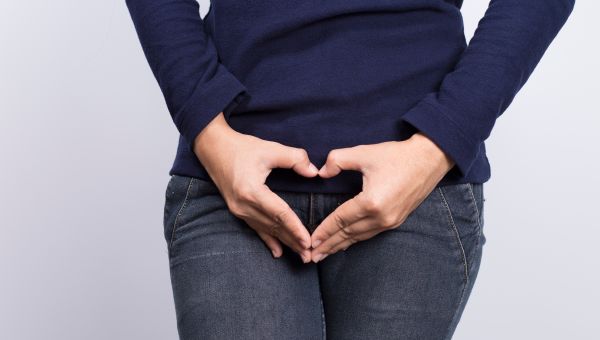
From time to time, it’s common for your vagina to feel a little itchy. This could be due to environmental changes, the products you’re using, or the changing levels of acidity and bacteria inside the vagina.
Sometimes, however, discharge and itching could be a sign that you have an infection that needs to be treated.
If you’re experiencing vaginal discomfort, talk to your healthcare provider (HCP), says Arunachalam Jothivijayarani, MD, a gynecologist at Blake Medical Center in Bradenton, Florida. “Many people don’t discuss vaginal discomfort with their doctor, maybe because they’re a little bit shy,” she adds.
We asked Dr. Jothivijayarani to explain common causes of vaginal itching, and what you can do about it.

Your hormones are shifting
Along with mood changes, bloating, and headaches, itchiness can sometimes be a symptom of premenstrual syndrome (PMS). When your hormones shift during your cycle, they can change the pH balance in your vagina, leading to irritation and itchiness. Here’s how:
- Good bacteria called lactobacilli live in your vagina.
- Lactobacilli create lactic acid, which raises the acidity of your vagina.
- When the acidity level, or pH, of your vagina is balanced, it’s able to protect itself against harmful overgrowth of certain bacteria and yeast.
- Hormone changes may disrupt this process and lower your pH. That can cause irritation, or encourage the overgrowth of itchy yeast.
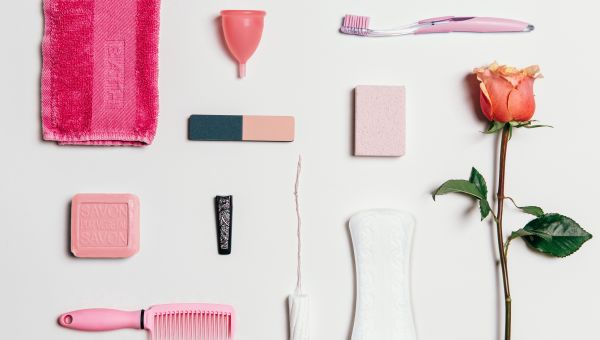
You’re sensitive to everyday products
There’s a large list of things that can cause vaginal irritation, says Jothivijayarani. Even the toilet paper you use can be an issue, especially if it’s scented or has a rough texture. Other potential irritants include fabric softener, body washes, bubble baths, bath salts, and scented oils.
Jothivijayarani suggests you check out the types of pads you use during your period, as well: They are often chemically treated to make them extra absorbent, she explains, which can aggravate sensitive vaginal tissue or trigger an allergic reaction. Avoid harsh chemicals by choosing “regular” or “hypoallergenic,” instead of “extra absorbent” pads.
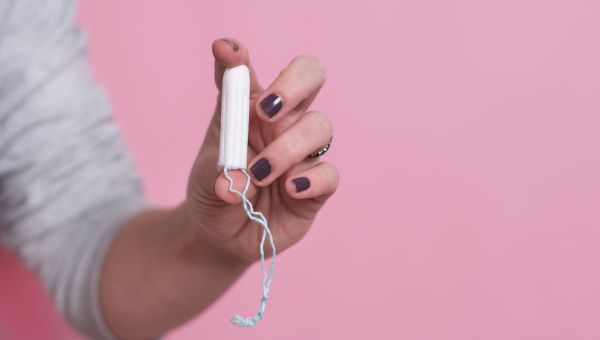
Your tampons are causing uncomfortable dryness
Tampons are designed to absorb liquid and moisture, but that means they can also affect your vagina’s protective mucus and moisture. The resulting dryness makes the lining of your vagina more likely to tear when you insert and remove the tampon. Those tiny cuts on the walls of your vagina may hurt, and put you at greater risk for infection, especially if you leave your tampon in too long, says Jothivijayarani.
If you’re experiencing vaginal itching or dryness, try switching from tampons to hypoallergenic pads until your symptoms clear—you can also consider trying out menstrual cups or disks.
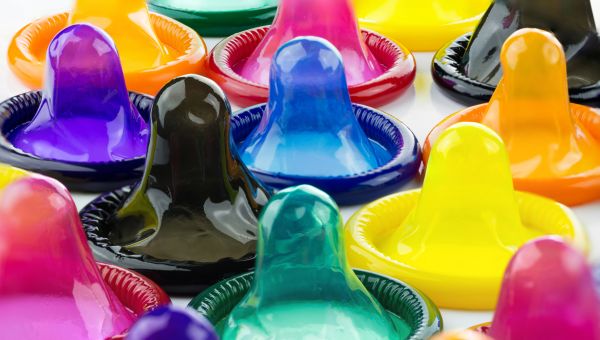
You’re allergic to latex
Latex is a sticky plant substance that’s used to make rubber. It’s found in products like rubber gloves, some medical devices, and many condoms. Often, people don’t realize they’re allergic to latex until they’re intimately exposed to it during sex.
If your partner uses condoms, and you notice you have vaginal itching, burning or a rash after sex, make an appointment to get tested for a latex allergy (if you have signs of a serious allergic reaction, such as chest pain, difficulty breathing, or palpitations, call 911 right away). If tests confirm that you do have an allergy, ask your HCP about latex-free condoms and other forms of birth control that will be gentler on your skin while still protecting you against pregnancy and STIs.

You could have a common infection
There are several infections that can cause vaginal itching, and the most common one is bacterial vaginosis (BV). The CDC estimates that nearly 1 in 3 women between 14-49 will get it. BV can be caused by a number of different microbes. It may come from bacteria in stool—one reason you should always wipe from front to back after you’ve had a bowel movement. It may also develop if the balance of different types of bacteria in your vagina changes.
“There’s always ‘bad’ bacteria in the vagina, but in very small amounts,” explains Jothivijayarani. “When the balance shifts—maybe because your vaginal pH changes—BV can occur.”
The hallmark symptom of BV is a fishy-smelling discharge. Some people experience itching, too, while others might have no symptoms at all. BV can be treated with antibiotics—always be sure to finish the course of treatment, even if the itching stops. To lower your risk for getting BV, have your partner wear a condom during sex (choose latex-free brands if you have a latex allergy) and skip douching. Your body has mechanisms to clean itself, Jothivijayarani says. Douching won’t clear an infection and, in fact, can remove the more helpful bacteria.

You have a yeast infection
Another very common cause of itching is yeast infections—the majority of people with vaginas will experience at least one at some point in their life. Yeast are a type of fungus that typically live on body surfaces like the skin, and inside the mouth, digestive tract and vagina. A little yeast is not a problem—it’s typical in a healthy vagina—but certain conditions can encourage it to overgrow. Yeast loves warm, moist environments; so sitting around in a warm moist environment for a long time, such as wearing a wet swimsuit or hanging out in sweaty gym clothes post-workout, can encourage the overgrowth of yeast and lead to an infection.
Symptoms include:
- Thick, white, “cottage-cheese” discharge
- Pain with sex or urination
- Red, irritated skin around the vagina
How to avoid an infection: Carry a clean pair of underwear in your beach bag and change after swimming, sitting in a hot tub, or walking around on a sweaty, hot day; avoid tight-fitting panty hose and jeans; switch out pads and tampons often; and wear cotton underwear, which breathes better than synthetic fabrics like nylon. Because yeast is a fungus, treatments include antifungal creams and pills.

You may have a common STI
Trichomoniasis is the most common, curable STI (sexually transmitted infection), with over 3.7 million cases in the US. Many people don’t experience any symptoms with this infection, but some signs to look for include:
- “Froggy-green” and “foamy” vaginal discharge
- Vaginal itching
- Burning or pain with urination
- Pain during sex
If you experience these symptoms or think you’ve been exposed, see your HCP right away. They’ll examine your vagina and take a discharge sample. If you test positive, you’ll need to take a dose or, in some cases, complete a seven-day course of antibiotics. Using condoms will reduce your chances of getting this STI.

Or It Could Be Herpes
Genital herpes is very common—about one in five Americans carry the virus. Because herpes can live in your system without causing any symptoms, it’s possible to go years without realizing you have it. That’s why it’s important to get tested if you might have been exposed through unprotected sex.
Your initial outbreak, or the first time you experience symptoms, is typically the most severe, with blisters that can last for two to three weeks. Before blisters appear, in what is called the “prodromal phase,” you might feel itching, tingling or pain,
Stress, illness and exhaustion can trigger future outbreaks. Your HCP may recommend an anti-viral medication like acyclovir to prevent or treat symptoms as needed. How often you’ll need medication will depend on the severity and frequency of your outbreaks.
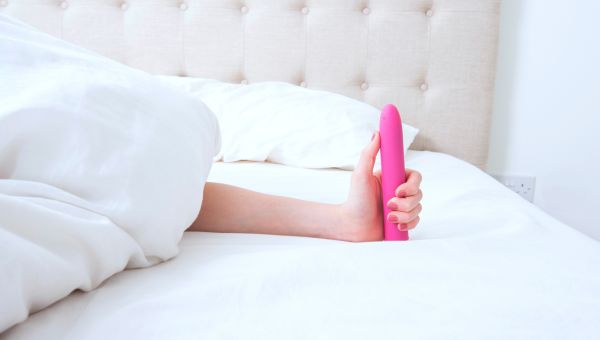
Your sex-toys could use a good scrubbing
Cleaning may be the last thing on your mind after using your sex toy, but don’t skip this important step. Bacteria can build up between sessions if it goes unwashed—even if you didn’t have an infection when you were using it—leading to infection the next time.
Read the instructions that come with the product to find out the best way to wash it, and once it’s clean store it in a bag or a case where it won’t get exposed to dirt or household germs.

You’re going through a life transition
“One of the most common reasons for vaginal itching is the transition to menopause,” says Jothivijayarani. “It often happens after a woman’s been through menopause, as well—and people don’t talk about it enough. Meanwhile, the itching and burning may be affecting their sleep, and their social life might be affected if they stop going out.”
The drop in estrogen that comes with menopause may contribute to itchiness by:
- Causing vaginal dryness
- Changing your vaginal pH
- Contributing to thinning of your vaginal wall, which makes it more sensitive and prone to infections
- Weakening the lining of your urethra, the tube that empties urine, leading to light bladder leakage (LBL)
If you’re experiencing vaginal itching during menopause, see your HCP about treatments such as prescribing an estrogen cream. If you’re developing frequent yeast infections, over-the-counter meds may not be addressing the real issue. Your HCP can prescribe estrogen suppositories the strengthen your vaginal wall if it is thinning.

When to see your HCP for vaginal itching
Vaginal irritation often gets better on its own. But you should see your HCP if the itching lasts longer than a week or interferes with your daily activities. “If it’s associated with other symptoms like burning, pain or vaginal discharge, that definitely means it needs medical attention,” says Jothivijayarani.
Other reasons to call your HCP:
- Fever
- Abdominal pain or bloating
- Vaginal odor
- Skin changes like blisters on your vagina or surrounding areas
- You’ve recently had unprotected sex

CDC. Bacterial Vaginosis (BV). Last reviewed February 10, 2020.
CDC. Vaginal candidiasis. Last updated July 13, 2022.
Johns Hopkins Medicine. Yeast infection. Accessed July 11, 2023.
InformerdHealth.org. Vaginal yeast infection (thrush): Overview. Last updated June 19, 2019.
More On


video

article

slideshow


video


video
